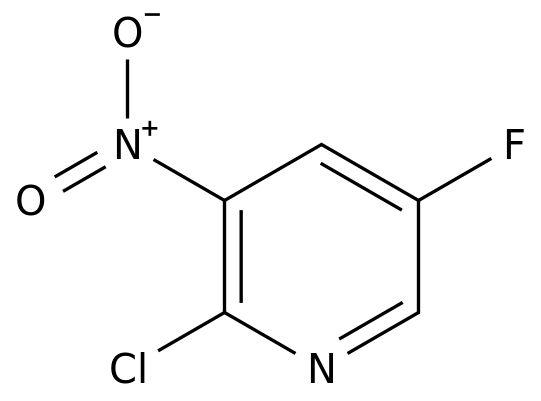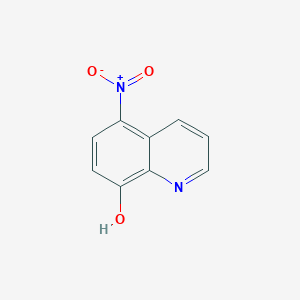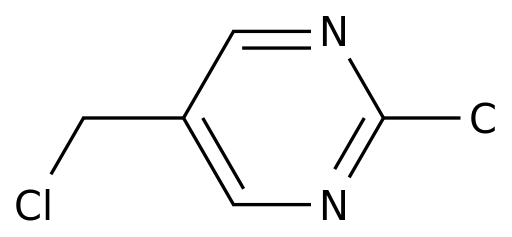-
Categories
-
Pharmaceutical Intermediates
-
Active Pharmaceutical Ingredients
-
Food Additives
- Industrial Coatings
- Agrochemicals
- Dyes and Pigments
- Surfactant
- Flavors and Fragrances
- Chemical Reagents
- Catalyst and Auxiliary
- Natural Products
- Inorganic Chemistry
-
Organic Chemistry
-
Biochemical Engineering
- Analytical Chemistry
- Cosmetic Ingredient
-
Pharmaceutical Intermediates
Promotion
ECHEMI Mall
Wholesale
Weekly Price
Exhibition
News
-
Trade Service
Pharm Exec magazine released its 2019 Global Pharmaceutical Companies 50 Companies 2019 list based on prescription drug sales, with prescription drug sales still top of the U.S. Pfizer list, with China Biopharmaceuticals and Jiangsu Hengrui Pharmaceuticals both on the list (based on 2018 sales figures from major pharmaceutical companies), but there is a huge gap between the two companies and Pfizer at the top of the list.
1: Comparison of sales between Chinese and international pharmaceutical companies Source: Pharm Exec's Top 50 Companies 2019 Switching Lenses to the Main Battleground, Igeahub Releases 2018 Global Pharmaceuticals TOP10, Pfizer Achieves Sales of 23.316 Billion Yuan in China Hengrui's 2019 results show revenue of 23.289 billion yuan, meaning that Hengrui's 2019 sales are not as good as Pfizer's sales in China in 2018.
, as a leading domestic enterprise, in strengthening the penetration of the domestic market at the same time, but also a big step towards the international market.
still a long way to go in the process of realizing the real internationalization, it has undoubtedly given other enterprises more confidence and strategic development ideas.
the growth track of Hengrui has any lessons to learn from? What are the key factors for entering the international market? How to quickly expand overseas sales channels? How do international pharmaceutical companies get a piece of the action in the context of monopoly on overseas markets? This paper will work one by one to provide reference for the international layout of Chinese pharmaceutical companies.
1. Comparison of the size and sales system of the Sino-US drug market (1) On October 9, 2019, the head of the Department of Immunology of the School of Basic Medicine of the Beijing Concord Medical College predicted that the global drug market will reach US$1.3 trillion in 2019.
2016 global drug market was $115.2 billion, while North America was $482.1 billion, or 43.6 percent.
, Germany and France accounted for 8.0%, 4.0% and 3.0% of the drug market, respectively.
Figure 2: Global Drug Market Share 2016 Source: Japan Pharmaceutical Industry Association Data: China's drug market size in 2017 was about RMB1611.8 billion, or US$233.2 billion (exchange rate RMB: USD: US$1:6.8), or about 1.96% of GDP, close to that of the United States (2.04%).
Figure 3: China's Drug Market Share 2017 Source: MiNet will reach US$685.45 billion by 2023, continuing its leading position in the global pharmaceutical market and reaching 43.72 percent by 2023 compared to 2017.
2019, U.S. drug spending is expected to grow 2.5 percent to more than $370 billion, while overall health care spending is expected to grow 4 percent to $3.6 trillion, according to a Report by Match Solutions.
drug sales are expected to reach $420 billion by 2023, accounting for nearly 1.7 percent of the country's GDP and 9.7 percent of overall health spending.
total health care spending is expected to reach $4.3 trillion over the same period.
Figure 4: U.S. 2010-2020 Drug Spending Source: Statista 3: MeiBaiJian believes that the U.S.-dominated North America is the world's largest drug market, China ranks second, while the overall market in the European Union is similar to China, but because of national and language issues can not achieve efficient approval and promotion.
the United States, both in terms of market share and international recognition, will be the first bastion of the internationalization process of Chinese pharmaceutical companies.
(2) Compared with the Sino-US drug sales system in China, the participants in the Chinese pharmaceutical industry generally include manufacturers (pharmaceutical companies), pharmaceutical companies (circulation), pharmaceutical/doctors, hospital pharmacies/retail pharmacies, and national health insurance.
pharmaceutical companies can not be sold directly to hospitals, must pass through pharmaceutical companies, but hospital prescriptions are mostly pharmaceutical companies medical information communication commissioners to follow up, prescription rights in the hands of doctors, but also pharmaceutical companies must compete.
hospital prescription sales accounted for the majority, while retail pharmacies are relatively weak, mainly OTC drugs, and because of the different proportion of medical insurance reimbursement, although the same drug in hospitals and pharmacies can be reimbursed, patients choose to go to the hospital prescription.
Depending on the process of drug circulation, participants in the U.S. pharmaceutical industry can generally be divided into manufacturers (pharmaceutical companies), wholesalers, pharmacies, PBM/medical service providers (hospitals/doctors), and insurance companies.
5: Retained Earnings of the U.S. Pharmaceutical Industry 2016 Source: Health Affairs Figure 6: U.S. Drug Sales System Source: JAMA Network Figure 7: U.S. Dealer Warehouse Source: Network II, U.S. Pharmaceutical Distribution System Dealers Have Absolute Voice (1) U.S. Distributor Channel Analysis U.S. Distributor Market Is Highly Integrated, with three companies accounting for more than 85% of the market: Amerisource Bergen, Cardinal Health and McKesson.
the three companies had estimated total drug distribution revenue of $378 billion in 2015 (noted above as $482.1 billion in the North American drug market in 2016), while Cardinal Health, Amerisource Bergen and McKesson sold 85-90 percent of U.S. prescription drugs.
Figure 8: U.S. Dealer Sales Data 2018 Source: Public Data, Mayer Health (2) U.S. Pharmacy Channel Analysis In 2015, the U.S. issued about 4.4 billion prescription prescriptions, with generic or branded generic prescription drugs accounting for 89% of the total.
about 60,000 pharmacies in the United States, 38,000 of which are retail chains and 22,000 are independent pharmacies.
retail pharmacy market can be divided into three categories: chain pharmacies and large shops with pharmacies, independent pharmacies and mail-order pharmacies.
15 largest companies, including CVS, Walgreens, Express Scripts and Walmart, generated more than $270 billion in revenue through retail and mail-order pharmacies in 2015, or about 74 percent of retail prescription revenue.
, $167 billion was retail revenue and $103 billion was mail-order revenue.
same period, independent pharmacies earned $48 billion.
2019, the top three U.S. retail pharmacies in the market were CVS, Walgreens Boots Alliance and Express Scripts.
Top U.S. Pharmacies Ranked by prescription drugs market share in 2019 Figure 9: 2019 Retail Pharmacy Market Share Rankings. Source: Statistics, Meipai Medical Health Over the past few decades, multinational pharmaceutical companies have often played a "seller" role in the Chinese market, importing innovative drugs into China and opening up the Chinese market.
in recent years, chinese domestic pharmaceutical companies continue to be approved in the FDA, while overseas pharmaceutical companies to introduce Chinese pharmaceutical companies more and more cases, the scale of transactions is getting higher and higher.
Chinese pharmaceutical companies are realizing internationalization strategies in various forms.
3. Chinese drug access to the United States opportunity analysis (1) Chinese pharmaceutical company ANDA approved number review since 2007 Zhejiang Huahai won the first AND (Nevira flat tablet), the outstanding elements in Chinese pharmaceutical enterprises through various channels and competitive strategies, and constantly in the international pharmaceutical market to develop and cultivate.
review of the approval of ANDA and NDA by Chinese pharmaceutical companies in 2019, Chinese pharmaceutical companies obtained FDA approval of 92 APPLICATION numbers, a total of 76 active ingredients, from 28 Chinese pharmaceutical companies.
is a small percentage relative to more than 3,000 base.
number of ANDA's products is small, and some of them come from acquisitions such as The Land Pharma acquired by Fosun.
Figure 10: The number of ANDAs approved by the FDA by Chinese pharmaceutical companies in 2019 Source: Pharmaceutical Intelligence Network Looking at the approval of ANDA of Chinese pharmaceutical companies in 2018, Chinese pharmaceutical companies have obtained FDA approval of ANDA up to 100 application numbers, a total of 78 active ingredients, from 24 Chinese pharmaceutical companies.
11: The number of ANDAs approved by the FDA by Chinese pharmaceutical companies in 2018 Source: Pharmaceutical Intelligence Network, but this is a small percentage relative to the more than 3,000-odd base.
This can be seen that China's preparation exports have just entered the initial stage, the author in 2019 field visit to Dongsan, the company's head said almost every month there is ANDA approved, worthy of the "pharmaceutical industry Huawei" reputation.
that the next five years will be a period of rapid growth for Chinese generics approved overseas.
(2) China's pharmaceutical company NDA was approved to achieve a "zero" breakthrough for innovative drugs, because the world's chemical drug industry the fastest development of 1980-2005, Chinese enterprises did not catch up, from 2003 returned scientists founded by Beida, Baiji and the local Hengrui pharmaceutical companies began to focus on innovative drug research and development.
And in recent years, China's innovative drugs in the capital, national policy reform, the development of innovative drugs has been rapid development, especially in 2019 Baiji Shenzhou BRUKINSA (common name: Zebutini) was approved, became China's first approved in the United States approved the local independent research and development of new cancer drugs, as a milestone in China's new drug research and development, I believe that more and more Chinese innovative drugs in the future approved for listing in the FDA.
Figure 12: FDA-approved NDA for Chinese drug companies in 2019 Source: FDA's official website, Mayer Medical Health (3) Trump's policy to help generic companies apply for ANDA for generic drugs, and since 2018, the U.S. has taken a series of steps from the president, the FDA to medical institutions to control drug prices.
measures, the first is to improve competition within the market, to prevent the original research manufacturers to use policy means to imitate generic pharmaceutical companies to enter the market.
2019, the FDA approved 808 generic drugs and tentatively approved 149, a new record number.
August 2018, the U.S. launched competitive generic therapies (Generic Therapies, CGT) to create a new review pathway to encourage pharmaceutical companies to develop generics for under-competitive drugs through policy support.
believes the FDA may continue to accelerate generic approvals in an environment of health spending pressures to provide a basis for expanding the U.S. generics market, which also offers opportunities for Chinese generics companies to accelerate their entry into the U.S. market.
4. Chinese drug entry into the U.S. market strategy for Chinese enterprises to enter the U.S. market, we in accordance with the drug approval before and after the drug approval two dimensions of the head enterprises in recent years to organize the movement and corresponding strategies for your reference.
(1) Pre-drug approval strategy◈ grant rights co-development (license Out) and the current prevalence of domestic license In, with high-value research and development products, in order to speed up the product in the United States research and development approval, often choose to jointly develop with local pharmaceutical companies to promote, this cooperation model because of upfront payment can obtain direct benefits, is the choice of most Chinese pharmaceutical companies model.
Classic Case 1: On September 6, 2018, Tiansli Pharmaceutical Group Co., Ltd. ("Tiansli") and U.S. pharmaceutical company Arbor Pharmaceuticals Inc. ("Arbor Corp.") announced their full cooperation in research and development and marketing of T89 in the United States.
Under the agreement, Arbor will contribute up to $23 million in research and development payments to work with Tianli on T89 FDA-related clinical development research and pharmaceutical regulatory filings, and will receive exclusive sales rights for T89-related adaptives in the U.S., where Tiansley will receive sales milestone payments of up to $50 million after the drug available, as well as a sales share of up to 50% gross margin.
Classic Case 2: In 2013, Baiji Shenzhou and Merck Sherano signed a global cooperation agreement to develop the second generation BRAF inhibitor BGB-283, which brought a lot of money to Baiji Shenzhou at a critical moment, and also saved Baiji Shenzhou at a critical moment.
◈ The establishment of U.S. companies independent research and development part of the comprehensive strength of enterprises, often choose to declare to the FDA, if the drug is approved, the rights and interests of their own, the current Baiji Shenzhou, Stone Medicine Europe has obviously tasted the sweetness.
Case 1: Hengrui Pharmaceuticals established a U.S. subsidiary hengrui Therapeutics is Hengrui's U.S. subsidiary, engaged in project introduction and drug discovery activities.
the company's drug in development initially included three tumor candidate drugs isolated from Hengrui, Jiangsu Province, SHR-A1201 (anti-HER2 ADC), and SHR1210 (anti-PD1).
June 2016, the company received a $100 million investment from Hengrui Pharmaceuticals and an unanclosed blue-chip investor.
2017, three of Hengrui Pharmaceuticals' four clinically approved innovative drugs in the United States have been declared by Hengrui Therapeutics.
Classic Case 2: On October 13, 2016, Fuhong Hanxuan established a U.S. subsidiary, Fuhong Hanxuan announced that henlix, a controlling subsidiary, had received a letter from the FDA agreeing to a clinical trial of the HLX07 injection.
Henlix is Fuhong Hanxuan through the platform.







